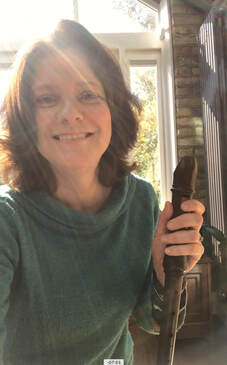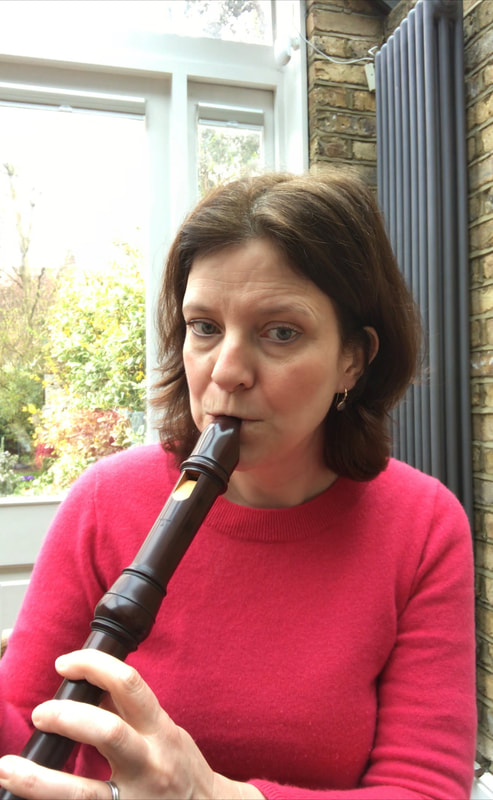now's the time to learn to double tongue! - part 4 of the recorder double tonguing challenge!!3/30/2020 Hi everyone! I hope you're ready for the next stage in the Double Tonguing Challenge..... Part 4 is HERE! Now it's time to use cross fingerings and low notes... Good luck! Any questions, just ask. X Emma @ Recorder Helpdesk! X DOWNLOAD EXERCISES ARE AVAILABLE FOR BOTH C AND F RECORDERS
7 Comments
NOW'S THE TIME TO LEARN TO DOUBLE TONGUE! - PART 3 OF THE RECORDER DOUBLE TONGUING CHALLENGE!!3/25/2020 Hi again! Now's the time to co-ordinate your fingers with your tongue... Good luck! Any problems or questions, just ask. X Emma @ Recorder Helpdesk!
now's the time to learn to double tongue! - part 2 of the recorder double tonguing challenge!!3/23/2020 Hi everyone, I hope the Recorder Double Tonguing Challenge is going well for you. Part 2 is HERE, see below. You'll need an alto/treble recorder at A=440 pitch for this. Any questions or comments, please keep them coming! Good luck and have fun! Emma @ Recorder Helpdesk! X
Now's the time to learn to double tongue! - part 1 take the recorder double tonguing challenge!!3/19/2020 Did you know you can be a little sneaky with some fingerings on the recorder? This works well if you're playing very fast passages, or passages with tricky cross fingerings.
Why don't you try one I find particularly useful and see if it helps you? * On treble or alto recorder: the higher G# can be played with a low G# fingering, with pinched thumb. Try this with a fast arpeggiated figure, such as E G# B G# E G# B G# etc (this is also the case with the enharmonic equivalent, A flat) * On descant or soprano recorder: the above is the same with the higher D# fingering, using the lower D# fingering with a pinched thumb. Try the passage: B D# F# D# B D# F# D# etc (this is also the case with the enharmonic equivalent, E flat) I hope this helps! Emma @ Recorder Helpdesk! Do you find it hard to play quickly, however much you try? Even if you do lots of practice? Do some of your notes sound very flat and you can't make out why?
One thing you could be doing is resting your right hand fingers on the recorder when they're not being used. This is quite a common thing for people to do, as you may feel you need to support the instrument, but all it does is slow you down! If you need to support the recorder, rest the little finger of your right hand on the top of the bottom joint (the highest point of the decoration, above the hole) as this is the finger that is used the least. This leaves your other fingers ready to be used whenever they are needed. If you rest all or some of your right hand fingers on the recorder, you are having to make TWO movements to get the fingers onto the holes when they are needed: one to lift the fingers up, and the second, to adjust and put them down over the holes. If your fingers are waiting just above the holes when they're not being used, then you only need to make ONE movement to get them to cover the holes. Also, if you keep your right hand fingers on the instrument when they're not needed, then this effects the tuning. For example, if you try to play a G on the descant (so left hand thumb and fingers 1, 2 and 3 of the left hand), but you are resting your right fingers on the instrument which are partially covering the holes, then the G sounds very flat! Practice in front of the mirror to see if this is what you do! Give this a go and see if it helps! Good luck! Emma @ Recorder Helpdesk! This is a problem many people have which can be solved in two simple ways! You won't believe how easy it is!
1) RELAX YOUR MOUTH AND DROP YOUR JAW Think of a fish opening its mouth to take in air, or of a nutcracker soldier whose lower jaw drops for the nut to be inserted! Picture how the lower jaw simply hangs when you breathe in; we don’t create an embouchure on the recorder. In fact, the recorder is the one wind instrument where no embouchure should be produced. Imagine you’re about to say or sing the word ‘Arthur’. Breathe in to say the word and feel how your lower jaw drops to say it. Repeat this a few times, so you can really feel what is going on. This relaxed lowering of the bottom jaw is where we should place the recorder when we start to play. Very often people tighten their lips and raise their lower jaw to start playing, which creates tension and therefore a tense, tight sound. Keep your bottom jaw lowered when you have your recorder in your mouth to play so that your teeth stay apart, with the recorder resting in between them, but NOT touching the instrument. DO NOT play with your teeth clenched shut and DO NOT play with the recorder in front of your teeth, as this is tight and restricts the air flow needed to produce a nice tone. 2) THINK OF A PELICAN! DON’T CHANGE YOUR MOUTH FOR HIGH NOTES In the past, recorder players were told to tighten their mouths to help get the high notes out but this is the exact opposite of what you should be doing! You need to STAY relaxed, with your lower jaw lowered. Sometimes it can help to visualise that you have a large ball in the back of your throat to produce the high notes, which widens the back, releases any tension and keeps everything relaxed. I often think it helps to picture a PELICAN with its huge throat pouch and imagine your sound is coming from here. Try doing this when playing leaps going up and then leaps going down. Further details are in my 'Improve Your Recorder Playing Booklets' NO.1 RECORDER TECHNIQUE FROM SINGING: Breathing and Basic Articulation, available from my SHOP page. See if these two points help. Let me know how you get on, or if you have any other questions. Good luck! Emma Murphy @ Recorder Helpdesk! High As can always be a problem on the descant, so you are not alone... Here are a few things to try to help sort it out:
1) check you are playing loudly enough. If you’re not using enough air, the note won’t come out, so try playing the note and doing a crescendo until it does speak. 2) starting the note can be tricky because sometimes people try to play it with too strong an articulation, so it comes out with a split sound. If this happens, try slurring from a high G up to the high A a few times, until you’re relaxed and then try tonguing it with a soft ‘Doo’ articulation. 3) check your left thumb is making the thumbhole the correct size. If the high A is a grainy sound, then the thumb hole is too small, so try making it bigger. If the sound is too open, the thumbhole is too open, so try making it smaller. Experiment by playing a high A and adjusting the thumbhole while you play and find what works for you. I hope this helps! Good luck! Let me know how you get on, or if you have any other questions. Emma Murphy @ Recorder Helpdesk! |
JOIN THE CLUB!
SUBSCRIBE to my Members Only Page to receive access to exclusive Tutorials. TO BOOK AN ONLINE RECORDER LESSON, PLEASE GET IN TOUCH!
TO BOOK ME FOR A ZOOM (OR LIVE) CONCERT, GET IN TOUCH FOR DETAILS!
AuthorHi, I'm Emma Murphy & I'm a recorder player. I've taught for many years so have lots of answers to lots of recorder problems! JUST ASK! Archives
October 2020
Categories |
 RSS Feed
RSS Feed



